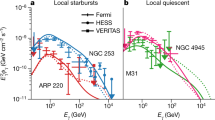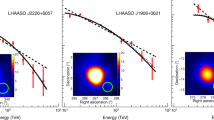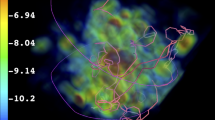Abstract
A SEARCH for X-ray emission from galactic objects on April 29, 1963, disclosed two localized sources, one of which appeared in Scorpius and the other in the direction of the Crab Nebula. The observations were made with a proportional counter flown in an Aerobee rocket from White Sands, New Mexico.
This is a preview of subscription content, access via your institution
Access options
Subscribe to this journal
Receive 51 print issues and online access
$199.00 per year
only $3.90 per issue
Buy this article
- Purchase on Springer Link
- Instant access to full article PDF
Prices may be subject to local taxes which are calculated during checkout
Similar content being viewed by others
References
Chiu, H.-Y., Supernovæ, Neutrinos and Neutron Stars, preprint from NASA-Goddard Institute for Space Studies, New York (1963) (to be published in Annals of Physics).
Giaconni, R., Gursky, H., Paolini, F. R., and Rossi, B. B., Phys. Rev. Letters, 9, 493 (1962); 11, 530 (1963).
Fisher, P. C., and Meyerott, A. J., Astrophys. J., 139, 123 (1964).
Author information
Authors and Affiliations
Rights and permissions
About this article
Cite this article
BOWYER, S., BYRAM, E., CHUBB, T. et al. X-ray Sources in the Galaxy. Nature 201, 1307–1308 (1964). https://doi.org/10.1038/2011307a0
Issue Date:
DOI: https://doi.org/10.1038/2011307a0
This article is cited by
-
Hard X-Ray/Soft Gamma-Ray Experiments and Missions: Overview and Prospects
Space Science Reviews (2017)
-
Neutron Stars—Cooling and Transport
Space Science Reviews (2015)
-
Searching for Black Holes in Space
Space Science Reviews (2014)
Comments
By submitting a comment you agree to abide by our Terms and Community Guidelines. If you find something abusive or that does not comply with our terms or guidelines please flag it as inappropriate.



